
National Metrology Institute
of South Africa

National Metrology Institute
of South Africa
Abstract: The Intra-Africa Metrology System (AFRIMETS) is in its 9th year of existence as the RMO for Africa. The structures necessary for a fully-fledged RMO are in place and the leading National Metrology Institutes are conducting regional key and supplementary comparisons. To date 18 such comparisons have been concluded or are in progress. Various training courses are being conducted and two summer schools were held for scientific and legal metrology.
It is a success story accomplished in a relatively short time, but much remain to be done. There are 44 member countries of AFRIMETS and only South Africa, Egypt, Kenya and Tunisia participate in international scientific metrology activities. Others such as Ghana, Botswana, Namibia, Mauritius, Seychelles, Sudan, Zambia and Zimbabwe only recently entered the international metrology world through associate membership of the General Conference on Weights and Measures (CGPM). Another group of about 15 countries have well established national metrology institutes and participate in regional metrology activities in both legal and scientific metrology.
This still leaves nearly half of the member countries with only some legal metrology facilities and in the process of developing their scientific and industrial metrology capabilities, or establishing NMIs. Various challenges remain such as the lack of government support and hence the lack of metrology infrastructure in these countries, difficulties with the movement of samples across borders and through customs and a large turn-around of staff in NMIs in the least developed countries. Metrology structures struggle to remain abreast of technological developments in the rest of the world and there is a need to design metrology solutions specific for Africa.
1.Introduction
An all-inclusive metrology system for Africa was established from 2005 to 2008. It built on the foundation established by the Southern African Development Community Cooperation in Measurement Traceability (SADCMET) that fulfilled the role of the Regional Metrology Organisation (RMO) in Africa from 1999 to 2008. In 2005, SADCMET joined forces with the SADC Cooperation in Legal metrology (SADCMEL) and the New Partnership for Africa’s Development (NEPAD), and with financial support from the Physikalisch Technische Bundesanstalt (PTB) and the National Metrology Institute of South Africa (NMISA), created a continental metrology body representing scientific and legal metrology. During the three year period, nearly all economic sub-regions of Africa joined the new Intra-Africa Metrology System and in October 2008, AFRIMETS was officially accepted by the International Committee for Weights and Measures (CIPM) as the RMO for Africa [1].
The membership of AFRIMETS is distinguished in two categories –firstly Principal members that are the sub-regional metrology organisations (SRMOs) based on regional economic blocks (REC) and secondly Ordinary member countries not part of a REC. The reason for the two levels of membership is to motivate countries in close proximity in the same REC to co-operate and establish metrology structures in support of the economic and other goals of the REC. Ordinary members can participate in all activities of AFRIMETS, but cannot hold office. The six SRMOs, representing a total of 42 countries, are: (1) SADCMET/MEL, (2) East African Metrology Programme (EAMET), (3) Economic and Monetary Community of Central Africa Metrology Cooperation (CEMACMET), (4) Secretariat for Metrology of the Economic Community of West African States (SOAMET), (5) Maghreb Metrology Network (MAGMET) and (6) North-East and Western Africa Metrology Programme (NEWMET). Currently there are two Ordinary members, Sierra Leone and The Gambia.
During 2009, the United Nations Development Organization (UNIDO), with the assistance of the International Bureau of Weights and Measures (BIPM) and the NMISA, secured funding from the Norwegian Agency for Development Co-operation (NORAD) to strengthen the AFRIMETS institutional structure. One output of the three year project is a Roadmap for AFRIMETS. Training is also high on the agenda.
The primary aim of AFRIMETS is to further and harmonise scientific, industrial and legal metrology issues across Africa and to operate as a fully-fledged RMO, fulfilling the obligations as stipulated in the CIPM Mutual Recognition Arrangement (MRA). The expanded role of AFRIMETS is to open market access and hence foster trade in the region and with the outside world [2].
2. The Structure of AFRIMETS
The structure of AFRIMETS with SRMOs as the Principal members (see Fig. 1) has been designed with the geographic spread, language blocks, limited road and air transport and free trade zones or customs unions in mind. It is difficult to transport artifacts or samples for comparisons or proficiency testing schemes (PTs) between custom zones in Africa, hence, the countries were asked to form SRMOs that closely resemble the economic trade communities or unions (UEMOA/ECOWAS, EAC, SADC, CEMAC, COMESA, etc.).

3. The Members of AFRIMETS
AFRIMETS now spans the continent and consists of six SRMOs as Principal members and two Ordinary members, as shown in Fig. 2. The individual members of the SRMOs are shown in Table 1. .


Only Somalia, Eritrea, Djibouti, South Sudan and a few countries on the western side of Africa without any significant metrology infrastructure, have not yet joined AFRIMETS.
4. Participation in the International Metrology System
One of the aims of AFRIMETS is to increase the membership of the BIPM and associate membership of the CGPM [3], and membership and corresponding membership of the International Organisation of Legal Metrology (OIML) [4].
4.1 Scientific and Industrial Metrology
At the inception of AFRIMETS in 2007, only two countries had full membership of the BIPM (thus were signatories to the Metre Convention), namely Egypt and South Africa. Kenya had associate membership of the CGPM. Since then, Kenya and Tunisia became full members of the BIPM and Botswana, Ghana, Namibia, Mauritius, Seychelles, Sudan, Zambia and Zimbabwe became associates
of the CGPM [5]. This brought the number of members of the BIPM in Africa to five, and the associates to the CGPM to 8. Two more countries are in the process to apply for associate membership namely Ethiopia and Morocco. The coverage of the continent by the members, and those that applied for membership, is shown in Fig. 3.

4.2 Legal Metrology
As of May 2015, there are nine members and twenty-one corresponding members of the OIML in Africa [6]. The membership is well distributed across the SRMOs with members (M) or corresponding members (CM) in SADCMET/MEL (3 M, 8 CM), EAMET (1 M, 2 CM), NEWMET (2 M, 4 CM), SOAMET (2 CM), MAGMET (3 M, 3 CM) and CEMACMET (1 M, 1 CM). The Gambia, Liberia, Guinea and Sierra
Leone are corresponding members, as well as the UEMOA REC that is a corresponding member representing the UEMOA countries.
5. The status of Metrology in Africa
The SRMO system is well established in EAMET [2], SADCMET/MEL [7, 8, 13], MAGMET [11] and NEWMET [12]. SADCMET/MEL is the best example of a SRMO in Africa developed according to the “traditional RMO” model. It was formed in 1992 and currently has fifteen member states, with the NMISA as the most prominent NMI in the region.
NMISA has 21 laboratories performing measurements in most of the physical parameters [9] and are represented on nine of the ten Consultative Committees (CCs) of the CIPM (the tenth being the Consultative Committee for Units, the CCU). Metrology in chemistry is also well established with laboratories for gas metrology, surface analysis, inorganic analysis and most
recently, organic and bio-analysis. It has membership of the Consultative Committee for Amount of Substance: Metrology in Chemistry and Biology (CCQM) and actively participates in the activities of the technical working groups. NMISA through its member of the CIPM, Dr Wynand Louw, also provides input to the activities of the CCU at the CIPM.
Through the NMISA, SADCMET/MEL thus has direct input to the ten CCs of the CIPM, and NMISA provides traceability to the SI (the International System of Units) or internationally agreed “stated references” for the SADC region. Apart from the NMISA, other countries in SADC do not realise the base units of the SI, but maintain National Measurement Standards (NMS) that
are calibrated at the NMISA, the PTB and the BIPM. The SADC EU project on Standards, Metrology and Accreditation [14] includes the calibration of Mass, Volume, Temperature and Dimensional national measurement standards of member countries at the NMISA. By the end of 2010, most of the basic parameter national measurement standards in SADC were calibrated at the NMISA.
A new programme financially assisted by the EU and with the technical assistance of the NMISA will help the associates of the CGPM within SADC to enter their calibration and measurement capabilities in the CIPM MRA.
At the other end of the spectrum is CEMACMET. There currently is little activity as a SRMO in CEMACMET and as mentioned, action plans are in place to re-start participation in AFRIMETS.
The level of development in the other SRMOs range between that of SADCMET/MEL and CEMACMET with EAMET, MAGMET and NEWMET with well-developed metrology structures under the leadership of KEBS (Kenya), ANM (Tunisia) and NIS (Egypt). A description of these capabilities can be found in references [1] and [2] with a special discussion on SOAMET as an example of how the
SRMO structure operates to give traceability to the sub-region where there is no member of the BIPM or associate of the CGPM. A summary of the SOAMET situation is provided below.
In SOAMET, individual countries have some legal but limited scientific and industrial metrology capabilities. Due to the limited capabilities in the member countries, SOAMET has adopted an innovative 21st century model to provide measurement result traceability to the sub-region.
SOAMET is the sub-regional metrology grouping of ECOWAS, but the members are currently all from the West African Economic and Monetary Union (UEMOA) that falls within ECOWAS, namely Benin, Burkina Faso, Guinea-Bissau, Côte d’Ivoire, Mali, Niger, Senegal and Togo. UEMOA countries account for only 0.1% of global trade in manufactured goods, and intra-trade is only
6% of total trade [15]. The main exports of the UEMOA countries are agro-food products, fish products and cotton. The main export market is the EU.
In the light of the critical importance of accurate measurement (and measurement result traceability necessary for the accreditation of testing and calibration facilities) the West African Secretariat for Metrology (SOAMET) was formed in 2007 to coordinate metrology activities in the region.
The well-established SRMOs can rely on one or more leading NMIs with capabilities to lead the way and provide a link to the international metrology system, or at least to one of the members of the BIPM in AFRIMETS that could in turn provide the link to the international system. This is not the case in SOAMET. The development of scientific and industrial metrology facilities is happening in countries such as Côte d’Ivoire where the Laboratoire National d’Essai de Qualité de Métrologie et d’Analyse(LANEMA ) is expanding on its calibration and equipment testing facilities to include scientific and industrial metrology, for example for water testing [16], but no single NMI is yet capable of providing traceability to the sub-region. SOAMET
thus adopted a regional approach to provide traceability to the sub-region, following the model of SOAC that created a unique regional accreditation body [17]. The idea is to identify the strengths of NMIs in the sub-region and existing national measurement standards in member countries that could be developed to provide traceability to internationally stated references
or the realisation of the SI. These measurement standards will then be recognised as “sub-regional measurement standards”. The advantage of this approach is that no single country needs to realise all the base units but can focus on the realisation of one or two units and/or establish the equivalence of one or a few high level measurement standards and obtain traceability
for the rest from countries in the sub-region. The sub-regional NMIs will then effectively function as one “super NMI”.
The process has commenced with the establishment of sub-regional technical committees for Mass, Temperature and Pressure [18]. This is different from the technical committees or working groups of a SRMO such as SADCMET/MEL whose main purpose is to organise comparisons between the established NMIs, as the primary aim here is to establish fit for purpose standards somewhere
in the region.
Challenges exist in the implementation of the system. National legislation should take cognisance of traceability to “sub-regional measurement standards” and not only national measurement standards. The second challenge is how to participate in the international metrology system. At the international level, membership of the BIPM and an associate of the GCPM are set up for individual country participation. The CIPM MRA states that it is open to “the NMIs of Associate States and Economies of the General Conference.” It is interpreted as participation by an NMI of a state or a “single economic entity”. Becoming an associate of the CGPM has been explored by a group of small countries from a geographic region that are organised in an
economic block, but new such “block memberships” is not currently allowed by the CGPM. SOAMET therefore needs to apply their structure to fit CGPM and CIPM MRA rules.
6. Progress in Metrology Developments in Africa
The past 8 years saw the establishment of a number of metrology facilities in Africa, either within government departments (mostly legal metrology) or within standards bureaus or by establishing stand-alone entities (mostly scientific metrology). The progress is graphically depicted in figures 4 and 5. Red depicts no or very little capabilities, yellow at least an
identifiable entity with some technical capabilities, green a well-established entity participating in the SRMO and OIML activities, silver an entity that is a sub-regional leader and gold fully participating at international level.

Most of the continent is therefore covered for Legal metrology except for a section in central Africa. But, the technical level of Legal metrology capabilities remains a concern and the aim is to get all countries in Africa to at least a “green” status with a “gold” member in each SRMO.

From Figure 5 it is clear that substantial development is needed in Scientific metrology. Although progress the past 8 years was substantial as witnessed by the additional 2 full members of the BIPM and 6 associates of the CGPM as well as capabilities established in Sudan, Mauritania and Burundi, a large portion of the continent in North and West Africa still need to establish scientific metrology capabilities.
The development of metrology in the regions with no or little capabilities received a substantial boost in 2013 with the formation of the Pan-African Quality Infrastructure (PAQI) in 2013 to represent AFRIMETS, the African Accreditation Cooperation (AFRAC), the African Organisation for Standardisation (ARSO) and the African Electro-technical Standardisation Commission (AFSEC) at African Union level and to coordinate QI issues on the continent. It is envisaged that PAQI will substantially increase the visibility of metrology, accreditation and standardisation on the continent and pave the way for better collaboration between the PAQI bodies.
7. Conclusion
The World Bank classified countries in 4 categories according to their financial status, namely (1) middle-income countries, (2) non-fragile low-income countries, (3) fragile low-income countries and (4) resource-rich countries [19]. This division roughly follows the geography of the SRMOs. In the south is the middle-income and resource-rich countries (most of SADCMET/MEL –except Zimbabwe, Mozambique, Malawi and Tanzania that are categorised as non-fragile low-income). In the east non-fragile low-income countries (EAMET), in the west a combination of non-fragile and fragile low-income countries (CEMACMET), and in the mid-west and north-east a combination of resource-rich and middle income countries (NEWMET –except Ethiopia and Ghana that are categorised as fragile and non-fragile low-income, respectively). The MAGMET countries will be covered in a next phase of the project and are not yet categorised.
This classification illustrates the difficulties in establishing an effective metrology system on the continent. Middle-income industrialised countries exist right next to fragile low-income countries (for example South Africa and Mozambique). In SOAMET and CEMACMET, most countries are non-fragile and fragile low-income, with a few resource-rich countries. In the whole continent there is not a single country that is classified as “high-income” or “industrialised” [1].
In response, the main role-players in metrology on the continent with the assistance of international stakeholders devised a special model for a regional metrology organisation that could provide in the special needs of the continent. Many challenges remain, such as:
- Participation from Legal metrology institutions need to improve;
- NMISA and NIS are currently the only pilot laboratories for comparisons in Africa. NMIs such as KEBS, GSB, LANEMA, LPEE/LNM and ANM can play an important role in future by organising sub-regional and eventually AFRIMETS comparisons;
- Developing all members to the point where they can participate in all AFRIMETS activities,
- Solving practical issues such as the movement of artefacts through customs; and
- The Sustainability of the System once donor funding is scaled down or disappears.
Notwithstanding the challenges, the members of AFRIMETS are optimistic that the RMO will develop and play an even bigger role in the success of the continent in years to come, and that with PAQI, QI and especially metrology facilities will be established in all countries on the continent.
8. Abbreviations
AFRIMETS Intra-Africa Metrology System
AFSEC African Electro-technical Standardisation Commission
AFRAC African Accreditation Cooperation
ANM Agence National de Métrologie (Tunisia)
AU African Union
ARSO African Organisation for Standardisation
BIPM International Bureau of Weights and Measures
BIML International Bureau of Legal Metrology
CIPM MRA International Committee for Weights and Measures Mutual Recognition Arrangement
CEMAC Economic and Monetary Community of Central Africa
CEMACMET CEMAC Metrology Cooperation
CGPM General Conference on Weights and Measures
EAC East African Community
EAMET EAC Metrology Program
ECOWAS Economic Community of West African States
EPA Interim Economic Partnership Agreement
EU European Union
GSB Ghana Standards Board
KEBS Kenya Bureau of Standards
LANEMA National Laboratory of Tests and Quality, Metrology and Analyses (Ivory Coast)
LMIs Legal Metrology Institutes
LNE-INM Laboratoire national de métrologie et d’essais – Institut National de Métrologie
LNE-SYRTE Laboratoire national de métrologie et d’essais – Système de Références Temps-Espace
LPEE/LNM Laboratoire Public D’Essais et D’Etudes/Laboratoire Nationale de Metrologie
MAGMET Maghreb Metrology Network (Le Réseau Maghrébin de Métrologie)
NEPAD New Partnership for Africa’s Development
NIS National Institute for Standards (Egypt)
NMIs National Metrology Institutes
NMISA National Metrology Institute of South Africa
NORAD Norwegian Agency for Development Co-operation
NEWMET North-Eastern and Western Africa Metrology Programme
PT Proficiency Testing
PTB Physikalisch Technische Bundesanstalt (Germany)
RMO Regional Metrology Organization
SADCS outhern African Development Community
SADCMET SADC Cooperation in Measurement Traceability
SADCMEL SADC Cooperation in Legal Metrology
SADCMET/MEL SRMO for SADC
SOAC Système Ouest Africain d’Accréditation
SOAMET Secretariat for Metrology of the Economic Community of West African States
SI International System of Units
SQAM Standards, Quality, Accreditation and Metrology
SRMO Sub-regional Metrology Organization
UEMOA West African Economic and Monetary Union
UNIDO United Nations Industrial Development Organization
USA United States of America
Bibliografía
-
[1]C.W. Louw and D Masuku, “The Impact of the Intra Africa Metrology System on Intra-African and Global Trade,” NCSLI MEASURE, vol. 5, no. 2, pp. 72-78, 2010.
-
[2]C.W. Louw, “ A 21st Century Model for Providing Measurement Traceability in Africa”, NCSLI MEASURE, vol. 5, no. 4, pp. 38-44, 2010
-
[3]M. Musarurwa, “Final Record of the Workshop on the Establishment of AFRIMETS,” Midrand South Africa, 23-24 March 2006.
-
[4] BIPM: www.bipm.org
-
[5] OIML: www.oiml.org/
-
[6]www.bipm.org/en/about-us/member-states 15 May 2015
-
[8]The Southern African Development website, see: www.sadc.int
-
[9]The SADC Cooperation in Measurement Traceability website, www.sadcmet.org
-
[10] www.nmisa.org
-
[11]M. Madakufamba, “Southern Africa: SADC Summit to Launch Free Trade Area,” http://allafrica.com/stories/200808070608.html
-
[12]MAGMET report: Mourad Ben Hassine, “workgroups.oiml.org/ciml-2009/regional-organizations/Magmet.ppt”
-
[13]A. Abuelezz, “Metrological Capabilities of National Institute of Standards (NIS), Egypt,” CAFMET 2010, 3rd International Metrology Conference, www.iq-maghreb.net/fileadmin/user…/NIS-Capabilities-CAFMET2010.pdf
-
[14]“The SADC Standards, Quality, Accreditation and Metrology Programme,” www.sadc.int/icp/index/browse/page/441, paragraph 3.4
-
[15]The SADC EU PE2 Project: Calibration of NMS. For details contact the SADCMET Regional Coordinator Mr Donald Masuku at DMasuku@nmisa.org
-
[16]Economic Community of West African States, http://en.wikipedia.org/wiki/Economic_Community_of_West_African_States
-
[17]C. Menard and G. Clarke, “Reforming Water Supply in Côte d’Ivoire,” www.castalia-advisors.com/files/1853.pdf
-
[18]B Fudo, “A Quality Programme for Africa,” ISO Focus, October 2006, reproduced with permission from the ISO Central Secretariat in www.unido.org/fileadmin/import/57896_UEMOA_in_ISO_FocusOctober2006.pdf
-
[19]S. Issoufou, “Presentation Sur Les Activites du SOAMET,” 3rd AFRIMETS General Assembly, July 2009. www.afrimets.org
-
[20]V. Foster and C. Briceño-Garmendia (ed), “Africa’s Infrastructure: A Time for Transformation,” The International Bank for Reconstruction and Development/The World Bank, 1818 H Street, NW, Washington DC 20433, page 51, 2010.
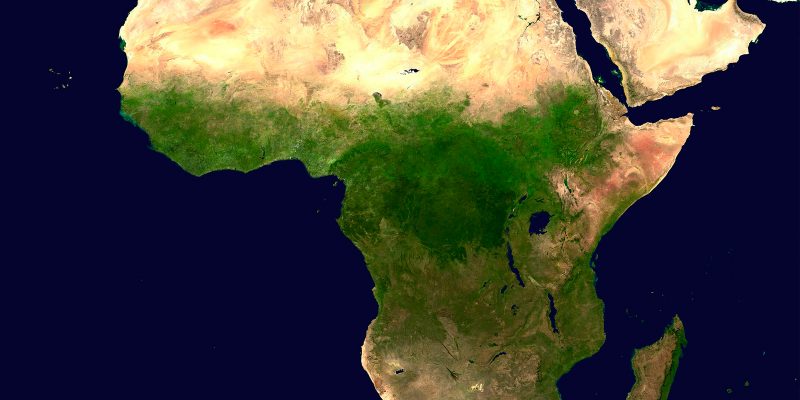

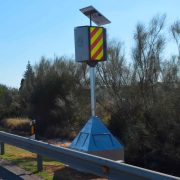
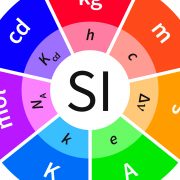
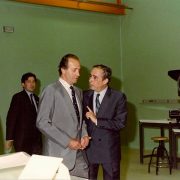

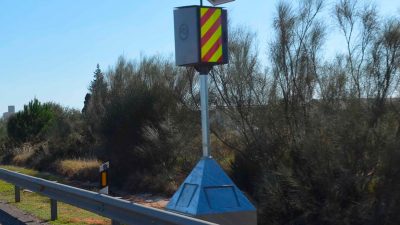
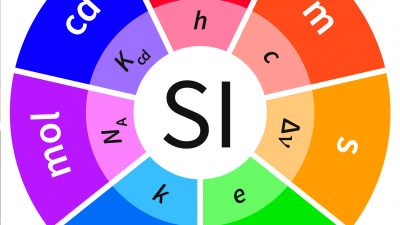
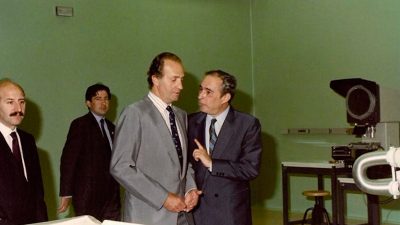
Comentarios